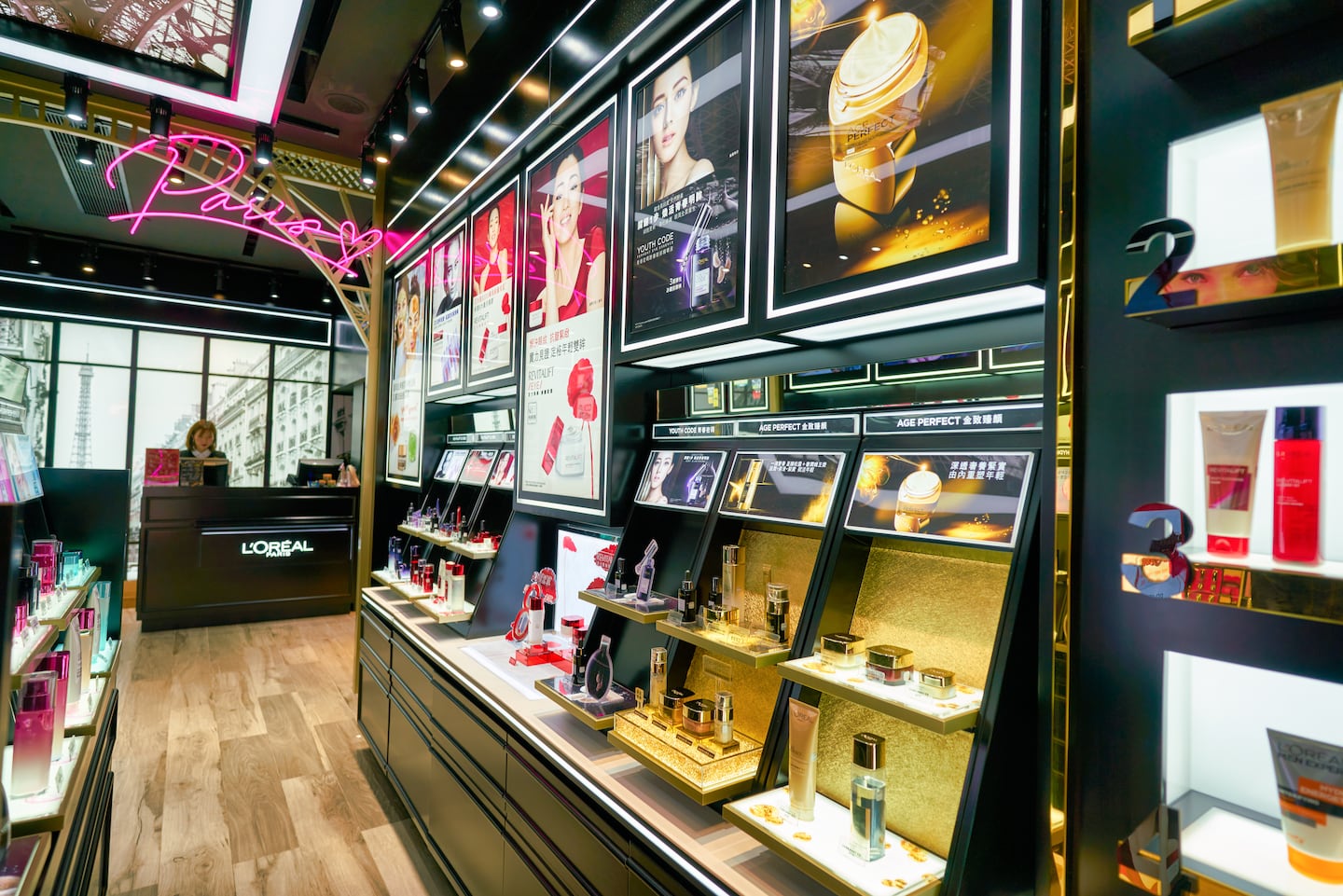
The Business of Fashion
Agenda-setting intelligence, analysis and advice for the global fashion community.

Agenda-setting intelligence, analysis and advice for the global fashion community.

PARIS – The world’s biggest cosmetics company L’Oréal reported its third consecutive year of double-digit growth, but sputtering progress in China worried investors on an otherwise upward trajectory. Sales reached €41 billion ($44 billion).
Growth was led by L’Oréal’s dermatological beauty division, where sales of brands such as La Roche Posay, Cerave and Skinceuticals grew 28 percent to 6.4 billion euros ($6.9 billion). Brands with scientific-led claims are enormously popular with consumers, and L’Oréal has made savvy plays in the category at both mass and prestige price points. Cerave, which announced its first-ever Super Bowl advertisement this week, is now the top-selling skincare brand in the US.
The group’s luxury division grew more slowly, with sales rising 4.5 percent for licences like Armani, YSL and Prada and high-end brands like Helena Rubinstein skincare rising 4.5 percent.
Still, the division marked major milestones: with nearly €15 billion ($16 billion), the group surpassed rival Estée Lauder Companies to become the global market leader for prestige beauty. The group also announced its latest acquisition Friday, a licensing deal with Prada Group to sell beauty products for its buzzy Miu Miu label.
ADVERTISEMENT
Broader distribution in the US, including a deal with Amazon, allowed the company to offset the softness in China and travel retail that have dragged down ELC. L’Oréal remains a wholesale-focused group, but the luxury division’s leader Cyril Chapuy said opening more brick and mortar stores was proving especially lucrative.
A muted performance in Asia, where sales declined 1 percent year-on-year likely worried investors: shares fell 7.5 percent in Friday early trading hours.Still, chief executive Nicolas Hieronimus was upbeat at a meeting with analysts and journalists who asked where else the company might look for growth. “China is the new China,” he said, noting that even if the market only grew in the mid single digits each year, that would still be like adding “half of Italy” every year.
Hieronimus said the company still “has lots of opportunities to recruit new consumers”, estimating that L’Oréal currently only reaches a quarter of the country’s addressable consumer base of 400 million. Investments into Chinese-owned beauty startups will be another strategic focus.
Changes to border policy change weakened L’Oreal’s Hainan business by 20 percent, but Hieronimus said that inventory was now “almost back to normal”, and that Lancôme remains the number one skincare brand in China.
Despite the China slowdown, emerging markets continued to be a focus: the biggest growth region was Latin America, where sales grew 24 percent. India is another focus, having become L’Oréal’s fifth-biggest market.
At a meeting with investors and the press Friday, Myriam Cohen-Welgryn, head of the dermatological beauty division, said it had entered India and Nigeria in 2023, and that the unit could continue its growth by developing more into emerging markets. Growth will also be lifted by the ongoing increase in skin pathologies such as acne and eczema, for which L’Oréal works closely with medical professionals to ensure its products are recommended.
On the sale of natural skincare brand Sanoflore and closure of essential oil-based Decléor, Cohen-Welgyrn said it was an opportunity to refocus on more medical brands. “We tried to drive the pharmacy kind of business model [with Decléor] but realised that…essential oils are not very compatible with sensitive skin,” she said.
Across the group a slew of new launches, such as Prada Paradoxe perfume, Maybelline New York Surreal Mascara, Nyx Fat Oil Lip Gloss and Garnier Good hair colour all created dynamism, but L’Oréal’s overall broad mix of buzzy brands across different price points has insulated the company from the headwinds that have knocked over its rivals.
ADVERTISEMENT
Now that L’Oréal has taken ELC’s luxury crown, it seems ready to coin its own catchphrase, too. While ELC chairman emeritus Leonard Lauder spoke of the “lipstick index”, meaning that people still shop for beauty during economic downturns, Hieronimus referred to what he called the dopamine effect: “It’s based on the principle that using beauty products gives a feeling of pleasure and satisfaction.”
Learn more:
Estée Lauder Reveals Its Recovery Playbook
The beauty giant announced layoffs and plans to regain profitability, measures to restore faith in investors and customers alike.
The Spanish beauty and fashion conglomerate’s smart acquisitions and diverse portfolio could be a big draw for investors. Plus, Adidas is set to confirm its stellar first quarter.
How not to look tired? Make money.
In a rare video this week, the mega-singer responded to sceptics and gave the public a look at what her beauty founder personality might be.
Request your invitation to attend our annual gathering for leaders shaping the global beauty and wellness industry.